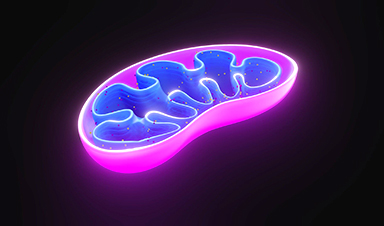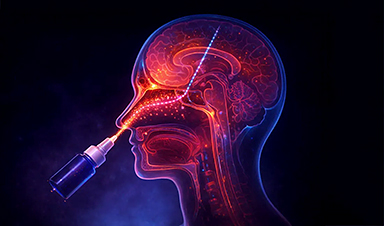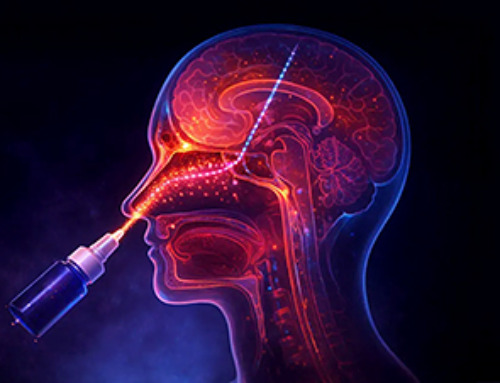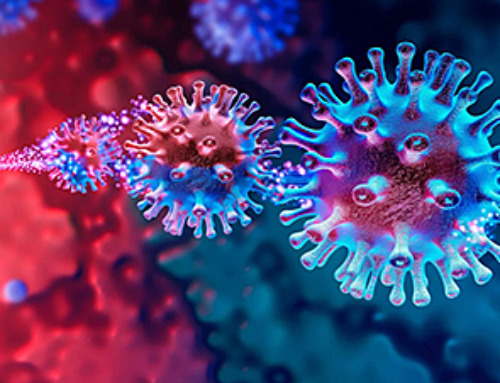Compartmentalization is one of the main strategies by which nature allows for control over many biological processes. For the proper functioning of living cells, organelles, small compartments within the cell, are essential. Researchers are working on ways to make artificial organelles that add new functionalities to cells or correct dysfunctional processes in cells, for example as a therapy for metabolic diseases. This can be achieved by using synthetic components to produce artificial organelles outside the cell or by using components made in the cell. And it’s the latter approach that Suzanne Timmermans explored for her Ph.D. research through the use of protein nanoparticles.
For her Ph.D. research, Suzanne Timmermans used protein nanoparticle to develop artificial organelles that could do new jobs in the cell. These microscopic particles are composed of viral capsids (the protein shells of viruses) to which a stabilizing protein domain was added.
Timmermans demonstrated that the nanoparticles are stable over prolonged times under conditions that are comparable to those inside cells. This is crucial for the correct functioning of an artificial organelle, as it would be very destructive if it were to disintegrate and lose its function inside the cell. In addition, the stabilizing domains enable the nanoparticles to react to their environment by changing their size. The natural processes in the cell often demonstrate such responsive behavior, so it is very important to mimic this.
Active component
To have a particular function in the cell, an artificial organelle must contain an active component. Enzymes are excellent candidates, as these protein catalysts can be produced by cells, they are naturally active inside cells, and many enzymes with all kinds of functionalities are known.
The protein nanoparticles used by Timmermans consist of an empty core. She demonstrated that it is feasible to encapsulate enzymes in that core. This was achieved both outside of cells and within living cells. Specifically, the latter finding is very promising for the development of an artificial organelle.
Beneficial effect on and inside cells
Finally, Timmermans evaluated whether the artificial organelles have a beneficial effect on and inside cells. First, she employed the activity of the encapsulated enzymes for the production of a compound that could be used by the cell to produce a certain protein. Next, she evaluated whether encapsulation inside the artificial organelle could protect the enzyme from rapid degradation by so-called proteases. This aspect of the project proved very challenging to prove, and this project is still in development.
Altogether, Timmermans’s research has advanced knowledge on the development of artificial organelles that are produced inside cells. Important challenges that still have to be overcome are the realization of the activity of the artificial organelles inside cells, the regulation of this activity by specific signals, and the detection of the organelles inside cells. By collaborating with different scientific disciplines and by employing the developments that have been made with other protein nanoparticles, Timmermans hopes that these hurdles can be overcome in the future.
News
Miller School Researchers Pioneer Nanovanilloid-Based Brain Cooling for Traumatic Injury
A multidisciplinary team at the University of Miami Miller School of Medicine has developed a breakthrough nanodrug platform that may prove beneficial for rapid, targeted therapeutic hypothermia after traumatic brain injury (TBI). Their work, published in ACS [...]
COVID-19 still claims more than 100,000 US lives each year
Centers for Disease Control and Prevention researchers report national estimates of 43.6 million COVID-19-associated illnesses and 101,300 deaths in the US during October 2022 to September 2023, plus 33.0 million illnesses and 100,800 deaths [...]
Nanomedicine in 2026: Experts Predict the Year Ahead
Progress in nanomedicine is almost as fast as the science is small. Over the last year, we've seen an abundance of headlines covering medical R&D at the nanoscale: polymer-coated nanoparticles targeting ovarian cancer, Albumin recruiting nanoparticles for [...]
Lipid nanoparticles could unlock access for millions of autoimmune patients
Capstan Therapeutics scientists demonstrate that lipid nanoparticles can engineer CAR T cells within the body without laboratory cell manufacturing and ex vivo expansion. The method using targeted lipid nanoparticles (tLNPs) is designed to deliver [...]
The Brain’s Strange Way of Computing Could Explain Consciousness
Consciousness may emerge not from code, but from the way living brains physically compute. Discussions about consciousness often stall between two deeply rooted viewpoints. One is computational functionalism, which holds that cognition can be [...]
First breathing ‘lung-on-chip’ developed using genetically identical cells
Researchers at the Francis Crick Institute and AlveoliX have developed the first human lung-on-chip model using stem cells taken from only one person. These chips simulate breathing motions and lung disease in an individual, [...]
Cell Membranes May Act Like Tiny Power Generators
Living cells may generate electricity through the natural motion of their membranes. These fast electrical signals could play a role in how cells communicate and sense their surroundings. Scientists have proposed a new theoretical [...]
This Viral RNA Structure Could Lead to a Universal Antiviral Drug
Researchers identify a shared RNA-protein interaction that could lead to broad-spectrum antiviral treatments for enteroviruses. A new study from the University of Maryland, Baltimore County (UMBC), published in Nature Communications, explains how enteroviruses begin reproducing [...]
New study suggests a way to rejuvenate the immune system
Stimulating the liver to produce some of the signals of the thymus can reverse age-related declines in T-cell populations and enhance response to vaccination. As people age, their immune system function declines. T cell [...]
Nerve Damage Can Disrupt Immunity Across the Entire Body
A single nerve injury can quietly reshape the immune system across the entire body. Preclinical research from McGill University suggests that nerve injuries may lead to long-lasting changes in the immune system, and these [...]
Fake Science Is Growing Faster Than Legitimate Research, New Study Warns
New research reveals organized networks linking paper mills, intermediaries, and compromised academic journals Organized scientific fraud is becoming increasingly common, ranging from fabricated research to the buying and selling of authorship and citations, according [...]
Scientists Unlock a New Way to Hear the Brain’s Hidden Language
Scientists can finally hear the brain’s quietest messages—unlocking the hidden code behind how neurons think, decide, and remember. Scientists have created a new protein that can capture the incoming chemical signals received by brain [...]
Does being infected or vaccinated first influence COVID-19 immunity?
A new study analyzing the immune response to COVID-19 in a Catalan cohort of health workers sheds light on an important question: does it matter whether a person was first infected or first vaccinated? [...]
We May Never Know if AI Is Conscious, Says Cambridge Philosopher
As claims about conscious AI grow louder, a Cambridge philosopher argues that we lack the evidence to know whether machines can truly be conscious, let alone morally significant. A philosopher at the University of [...]
AI Helped Scientists Stop a Virus With One Tiny Change
Using AI, researchers identified one tiny molecular interaction that viruses need to infect cells. Disrupting it stopped the virus before infection could begin. Washington State University scientists have uncovered a method to interfere with a key [...]
Deadly Hospital Fungus May Finally Have a Weakness
A deadly, drug-resistant hospital fungus may finally have a weakness—and scientists think they’ve found it. Researchers have identified a genetic process that could open the door to new treatments for a dangerous fungal infection [...]





















